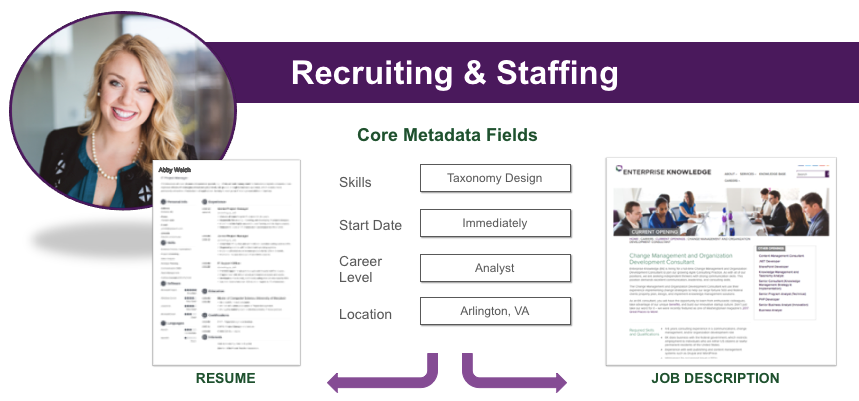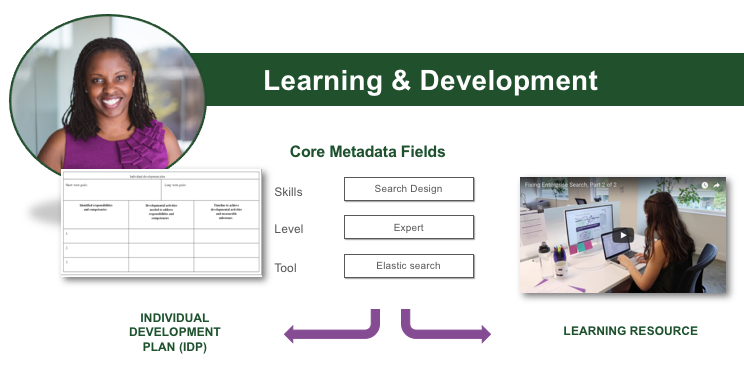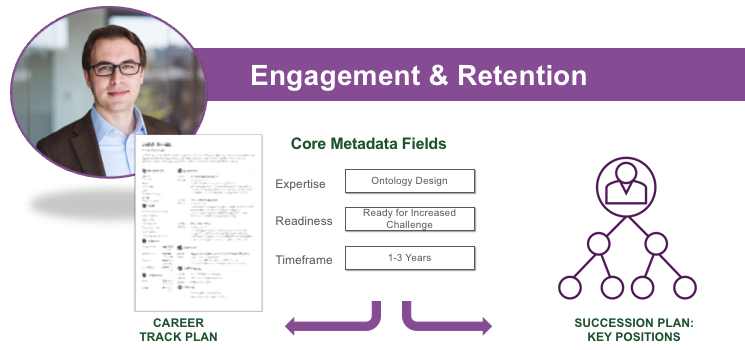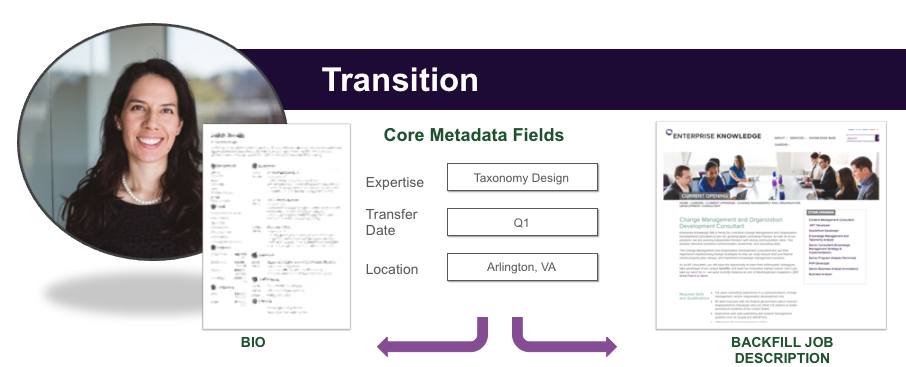A set of well-designed business taxonomies can connect the most qualified people to the best-suited opportunities throughout an organization’s talent management lifecycle. When employees feel a sense of challenge and accomplishment in their current role and in anticipation of future roles, it results in improvements in the quality of an organization’s work environment and the caliber of customers it gets the opportunity to support. This blog will walk through each stage of the talent management lifecycle and provide insight into how business taxonomies can be used to “get the right people, to the right opportunities, at the right time.”
Human capital continues to be among the top priorities for CEOs around the world. There are many factors that give organizations the competitive edge in attracting and retaining top talent, but one of the primary considerations is whether or not people are connected to the opportunities that leverage their capabilities, allow them to grow, and tap into their professional interests. The talent management lifecycle is a matter of making that connection between people and opportunities at each of the following stages:
1. Recruitment & Staffing
2. Learning & Development
3. Engagement & Retention
4. Transition
However, there are so many factors to consider when describing people and opportunities that it’s often challenging to consistently make the right match. Here’s how a business taxonomy can help.
1. Recruitment & Staffing
When filling positions either with external or internal talent, hiring managers and recruiters/staffers typically advertise open positions with a job description. The job description includes company information, an overview of the company, job responsibilities, and position requirements. Of those position requirements, there are required and preferred qualifications. The required qualifications may be a degree or certification that the candidate must have in order to even be considered. The preferred qualifications could be the skills and capabilities they need to be able to perform in the role. Additionally, the candidate should be available to start the position by a certain date, work at a certain location, and the candidate should fall within a certain range of experience or salary level.
Often times recruiters and staffers will manually gauge whether people are a match for positions, but if each of these facets had controlled vocabularies used to tag both people (or their resumes) and positions (or the job descriptions), then the matching process could be easily automated. For example, if a person was tagged with skills in programming, specifically using the language Java, fit into a junior-level position with a salary between $70-80K, and was available to start immediately, then this person would be matched with a position that has been tagged with that skill, career level/salary range, and start date.
Sites like Careerbuilder (see image below) use faceted navigation to allow people to browse positions, so if an organization were to tag their positions and their candidates using a set of taxonomies, then the matchmaking process becomes much easier.

2. Learning & Development
Once the right person has been selected for a position, throughout their career they are likely to take advantage of the learning and development resources the organization offers. At this stage, the skills and capabilities a person has are less important than the skills and capabilities they want to develop.
Learning and development can offer a variety of learning materials that can be tagged with the skills and capabilities a person might be interested in gaining. Training videos, online or in-person courses, or reading material are all examples of learning resources that can be tagged with the skills and capabilities that a person can gain from consuming it. A set of taxonomies that capture those skills and capabilities will not only allow talent to find the best materials quickly but in more sophisticated systems, it can make recommendations on the training materials they should consider based on their expressed interests.

3. Engagement & Retention
Once employees are performing in their current role and continuing to develop themselves, it’s important for them to have insight into future opportunities for growth within the organization. Creating and communicating a succession plan demonstrates to employees that the organization sees them as a critical part of its future and it also ensures a flow of talent into the pipeline for key positions. Similar to the recruitment/staffing model, the critical facets here would be the skills and capabilities an individual has vs. those that are required for the increasingly more challenging positions they could potentially move into in the future. An important addition here is the readiness of the individual to move into one of these positions.
When supporting a Senior Executive Service talent and succession planning program, one of the taxonomies we used was a simple one for “Readiness” that included four values: (1) Ready for Increased Challenge, (2) Ready for Career Broadening, (3) Build Tenure/Experience, and (4) Contribute in Place. Tagging individuals with one of these values based on discussions between a panel reviewing their current capabilities and recent performance help to identify who should be considered for the key positions in the succession plan.

4. Transition
There comes a time in everyone’s tenure when they either move within the organization or move out of it. In this case, the skills and capabilities taxonomy is also important, but for a different reason. If the talent has been tagged with a set of skills and capabilities (along with a proficiency level), then the organization can gauge exactly what it’s losing in human capital. Then, the organization can determine whether or not to find talent to fill that gap.
Similar to Recruitment & Staffing, timing is key here. Knowing when an employee or set of employees are leaving their current role due to retirement, promotion, termination, etc. allows an organization to target their efforts across the other phases of the talent management lifecycle based on the expected changes to the talent pool in the near and far term. A standard set of business taxonomies can help to align all four phases, which in larger organizations are managed by different departments who may be spread across various locations. Having common terms when describing the people and opportunities within an organization not only allows talent to flow seamlessly through their career stages, but it also gives the organization a true picture of the strengths and weaknesses of their human capital.

Conclusion
Taxonomies can play a critical role in any organization’s talent management process. The tricky part is designing those taxonomies to not just be an inventory of all possible values, but instead creating them so that they aid the findability and discoverability of the right people for the right opportunities. This is where EK can help. Contact us.
